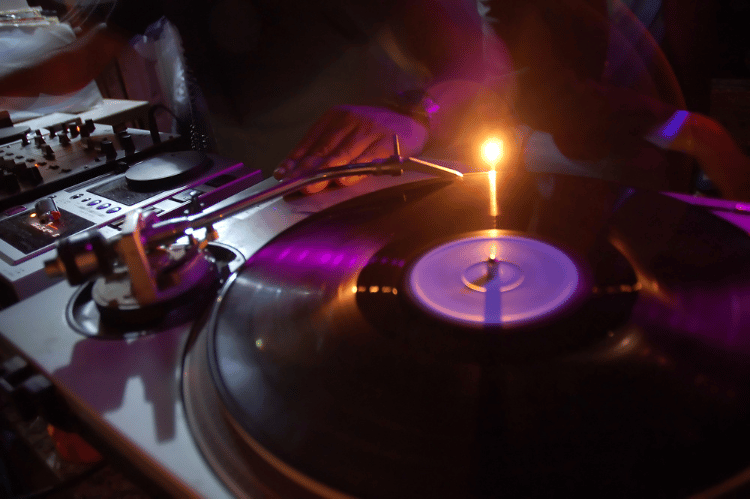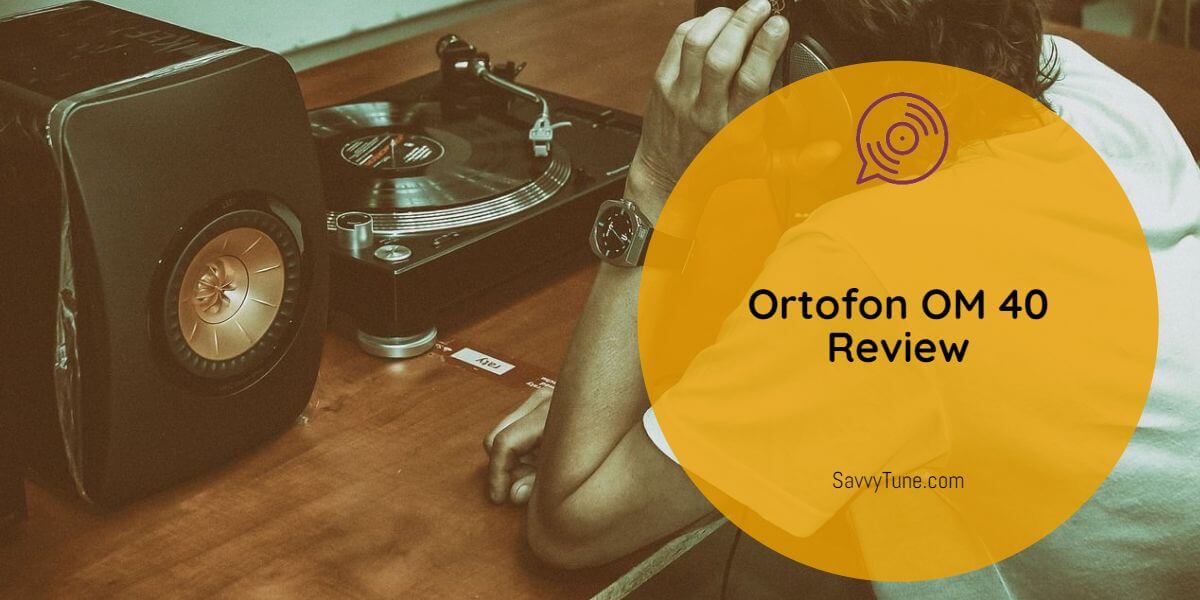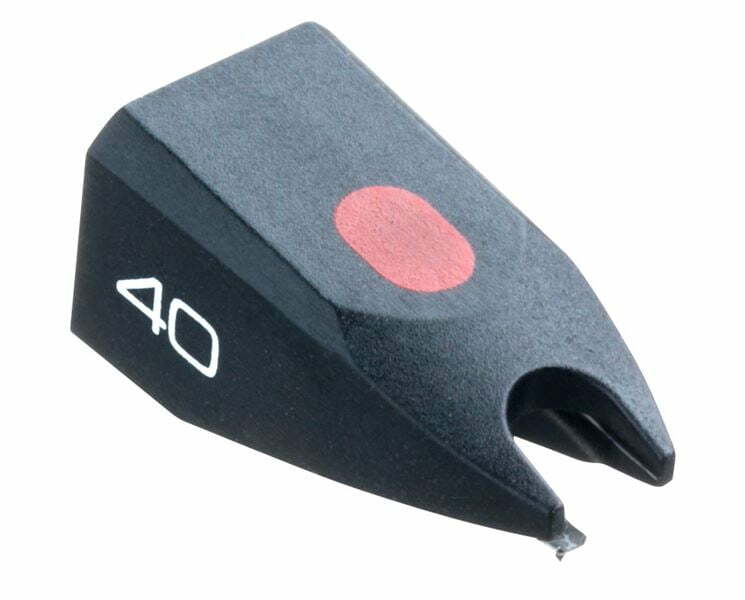Whether you’re an amateur or a pro audiophile, you’ve probably heard about Ortofon cartridges. After all, Ortofon has been in the cartridge game for decades. One of their famous cartridges is Ortofon OM 40, the last model in its series.
So, what’s special about Ortofon OM 40?
In this article, I’ll walk you through a detailed Ortofon OM 40 review. I’ll also provide two cartridge alternatives to Ortofon OM 40 to give you a range of options. Keep reading for all the details!
Ortofon OM 40 Review
Thanks to its superior nude diamond FG 70 stylus, the OM 40 produces balanced, clear audio. Additionally, the OM 40 enriches that beautiful, clean sound with delicate details from inner grooves, especially in the treble.
For that reason, Ortofon OM 40 makes a reasonable choice for both audiophiles and casual home listeners wanting to upgrade their listening experience.
Pros
- Replaceable styluses that track inner groves with ease
- Capturing a wide frequency range, expanding the type of LPs you can play
- Low tracking force, preventing record damage or sound distortion
- Produces a deep bass and open mids and highs, adding texture to the audio
- A durable nude stylus that doesn’t dent and warp records.
Cons
- The treble can come off as noisy
- Expensive stylus replacement
Ortofon OM 40 Key Features
Let’s take a closer look at Ortofon OM 40 features!
Replaceable Stylus
Originally, Ortofon OM 40 featured a nude Van Den Hul type II (VDH II) stylus. However, you’ll find the OM 40 available with a Fritz Gyger 70 (FG 70) stylus. So, what are the differences and similarities?
Similarities
Both styluses are made of nude diamonds. The former feature makes them highly durable since diamonds are one of the sturdiest materials. That means you don’t have to worry about the stylus snapping or getting scratched as you play your records.
Plus, nude styluses are directly mounted on the cantilever without a metal shank. A perk that allows the stylus to produce clear transients, unlike tipped diamond styluses.
Related: The top Ortofon cartridges on the market
Differences
The main difference between both styluses is their shape. The VDH II is more of an ellipse with a pointy tip. What’s handy about the VDH II tip is that it bridges over the damaged portions of the inner grooves due to stylus mistracking.
As for the FG 70, it resembles a trapezium but with a sharper end. For that reason, the FG 70 stylus captures the highs better than the VDH II.
Aside from the shape, both styluses might differ in their shelf life. On paper, cartridges can survive around 2000-2500 playing hours. In reality, the stylus would start to wear after 1000 playing hours.
That’s the case with FG 70 styluses. You can extend their lifetime with proper care, like cleaning the stylus and your records regularly. Still, you might notice sound degradation after you hit the 1000-hour mark.
On the other hand, VDH claims their styluses last up to 3000 playing hours without deterioration in sound quality.
That impressive range is thanks to the orientation of the stylus. VDH designed it in a way that the hard part of the diamond crystal comes in contact with the grooves. That helps prevent stylus wear and saves your precious records from dents and scratches.
Dynamic Audio
Regardless of the stylus used, Ortofon OM 40 does a decent job of capturing sound dynamics on a record. And it’s all thanks to the thin stylus tips. That feature allows the stylus to have more contact with the fine inner grooves, capturing fine details from the bass to the treble.
The lows are heavy and deep. The midrange is clear and open. As for the highs, this is where the OM 40 shines. It produces a forward treble, allowing the high frequencies to shine through and inject some texture into the sound.
As a result, you hear more details in the overall audio.
I find the FG 70 excelling more at capturing high frequencies. Still, the treble might come off as sharp and noisy. Conversely, the audio from the original VDH II stylus seems more balanced.
Tracking Force
Ortofon OM 40 has a tracking force between 1.25 and 1.75 grams, with a recommended tracking force of 1.5 grams. That makes the OM 40 fall in the middle of the average tracking force range for Hi-Fi cartridges, which is between 1 and 3 grams.
Plus, the OM 40’s tracking ability is good, thanks to the finer tips of the styluses.
For those who don’t know, the tracking ability of a cartridge is its ability to navigate the grooves without losing contact.
Additionally, a cartridge with good tracking ability moves without resistance whenever the grooves push it. As a result, the audio is free of distortion. A cartridge with low tracking ability needs high pressure to glide through the grooves.

As you know, Ortofon OM 40 stylus reaches deep grooves with ease. That’s why it doesn’t need a high tracking force to decode the sound information on a record. Consequently, you don’t have to worry about the cartridge putting too much weight on your precious vinyl and damaging it.
Related: Ortofon VMS 3E Review
Moderate Output Voltage
Ortofon OM 40 has an output voltage of 3.5 millivolts. That’s pretty average since the output range of most moving magnet (MM) cartridges is between 3 and 6 millivolts. The cartridge’s output voltage is responsible for how loud the produced audio signal is.
As output voltage increases, sound intensity also increases. That can be an important feature if you want to digitalize your LPs.
That said, Ortofon OM 40 produces an overall balanced audio—it’s neither quiet nor noisy. Yet, you might need to change to a higher gain preamp if you’re getting low volume from the OM 40 cartridge.
Wide Frequency Coverage
With a frequency range of 20-30,000 Hz, it’s easy to see why Ortofon OM 40 creates dynamic sounds. Usually, most cartridges cover a frequency of 20-20,000 Hz, which is the audible spectrum for human ears.
Still, high-end cartridges can go slightly above and below that range to add more details. Now, you might be thinking: why would a sound device have an extended frequency range beyond what humans can hear?
Well, that’s because the frequency response of most sound devices, including cartridges, isn’t linear.
To get a nice linear response, the input audio must be the same as the output power. In theory, it sounds achievable. However, there will be some frequency drops in the mix. That can happen for different reasons, like the interaction with the tonearm or the electronic components.
That’s why the OM 40 covers higher frequencies than we can hear to make up for the frequency variations.
Very High Compliance
The OM 40 cartridge has a dynamic compliance value of 35 µm/mN, which falls under the “very high compliance” category. For that reason, you should pair this cartridge with a low-mass tonearm that has an effective mass of 10 grams or lower.
Let me explain the whole tonearm-compliance interaction so that you get a better understanding of cartridge-tonearm compatibility.
Almost all cartridges produce resonance when mounted to tonearms. That has to do with the cartridge moving like a spring—which is known as compliance—and the tonearm acting as a counter mass.
You should aim for a resonance range of 10 Hz to get the best audio. Still, anywhere between 7 and 12 Hz is also acceptable. So, the goal is to match the cartridge with a compatible tonearm to achieve resonance within the accepted range.
The best way to do that is to pair low-mass tonearms with high to very-high compliance. Likewise, you should match moderate arms with low cartridge compliance.
Availability
Ortofon no longer promotes Ortofon OM 40 or any previous cartridges of the OM series (OM 10, 20, and 30) on their website. However, you can purchase the OM 40 stylus. That stylus fits all Super OM and OM Pro cartridges, which you can still find on the market.
Rating
Easy to install: 4.5/5
Sound quality: 4.5/5
Value for money: 4/5
Features: 4.5/5
Alternatives for Ortofon OM 40 Cartridge
Because of its rarity on the market, we’ve gathered two Ortofon OM 40 alternatives so that you can experience similar results with different products.
Related: Pro-Ject Tube Box S2 Vs DS2 Detailed Comparison
Audio-Technica VM740ML MicroLine Dual MM Cartridge
Unlike the OM 40, Audio-Technica VM740ML boasts a nude aluminum die-cast alloy MicroLine stylus. That stylus shape is a square shank with a very pointed tip. That enables the cartridge to produce great resolution and reduce inner groove distortion.
As a result, it brings all the delicate details to life. The VM740ML also does a decent job of producing clean transients, like the OM 40.
What’s more, thanks to the fine stylus tip, the VM740 captures the highs well. Plus, the treble comes off as smooth to the ears rather than bright. Audio-Technica has a frequency range of 20-27,000 Hz, which is slightly less than the OM 40 but still impressive.
Ortofon 2M Blue Moving Magnet Cartridge
While the Ortofon 2M Blue isn’t cheap, it’s still a more affordable option than the Audio-Technica VM740ML and the OM 40. It features a nude elliptical diamond stylus that tracks the grooves well. So, the overall audio is clear.
The blue produces a tight bass, but it can feel a bit lacking. As for the midrange, the blue adds a nice warmth to it.
As you might have expected, the treble is Ortofon 2M Blue’s strong suit, thanks to the elliptical stylus. However, like the OM 40, it can feel bright depending on the audio played.
Verdict
Ortofon OM 40 creates a dynamic, front-row sound that can please those looking for high-fidelity cartridges.
However, with great features comes a price. The OM 40 is hard to find since Ortofon no longer promotes it. Plus, the stylus replacement is expensive.



